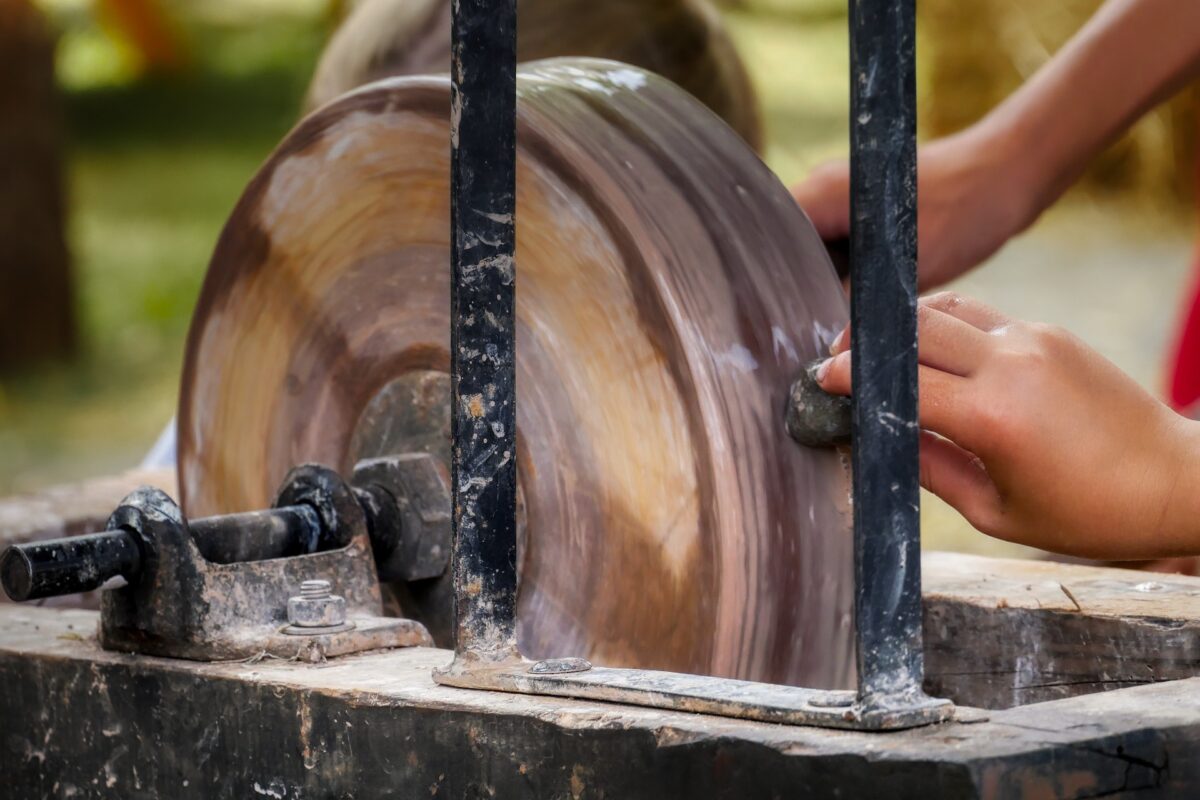Grinding and sharpening kitchen knives is not an art if the whetstone, sharpening angle and grit are right.
Stone, sharpening steel or ceramic, Anyone can sharpen kitchen knives
Why sharpening your own kitchen knife is a good idea.
First of all you save money and then also a lot of time. If you notice that your favorite knife is losing its sharpness, what to do? Now there are two big questions. What is the best way to sand and how do I do it right?
If you have a grinder and a bit of practice, it can actually be done very quickly. It’s fun and the joy of a subsequent sharp cut should not be underestimated.
There are many different solutions for quick resharpening. Everyone will find the right abrasive among the many offers.
We will go into more detail about the differences in this article. But before you grind, the question arises what is the correct sharpening angle for the corresponding knife.
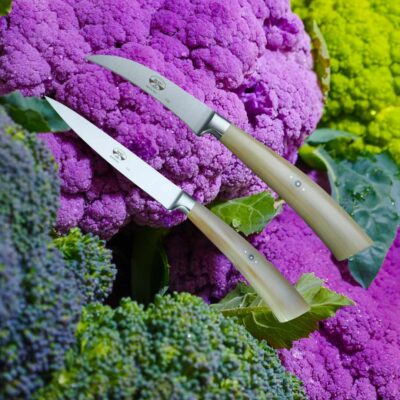
The right sharpening angle for kitchen knives is crucial.
The right cutting angle for knives is always a compromise. The angle has to meet two opposing demands on the knife itself. These are sharpness and edge retention.
The contradiction lies in the fact that the steeper the blade is ground, the sharper it is. However, this reduces the duration of the sharpness, i.e. the edge retention.
Cutting angle and grinding angle
The best result for both requirements, sharpness and its duration, is around 20 to 30 degrees of the cutting angle with kitchen knives.
This degree refers only to the cutting angle.< /p>
If you were to measure the sharpness with a protractor, the high degrees would come out.
This is different from the sharpening angle.
This is the angle at which you guide the knife across the stone or other abrasive. It is exactly half that on each side of the blade, i.e. 10° to 15°.
This is the angle at which you hold the blade during the sharpening process and draw the edge over the stone or steel.
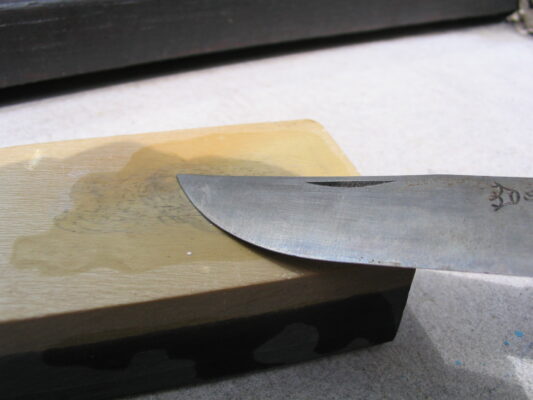
The false promise of always-sharp chef’s knives
A number of manufacturers offer knives, especially on the Internet, that are supposed to be sharp forever.
They just don’t exist. At some point you will notice that the sharpness decreases.
What the manufacturers use to advertise their always sharp knives is, for example, a titanium carbide coating. Of course it’s particularly hard. However, if the sharpness is rubbed off, the same rapid wear begins as with any other chef’s knife.
Regrinding is then possible. But the coating is worn away forever. However, if the basic material of the knife is softer than normal kitchen knives, you have bought one of the worst knives ever.
Another so-called always-sharp knife is made of ceramic.
Ceramic knives are very sharp and initially have a good service life and edge retention. If the blade has become blunt over time, regrinding is extremely difficult and usually expensive.
The best abrasive for ceramics is diamond. Grinding stones with diamond coatings in different grits are commercially available. But that has its price.<
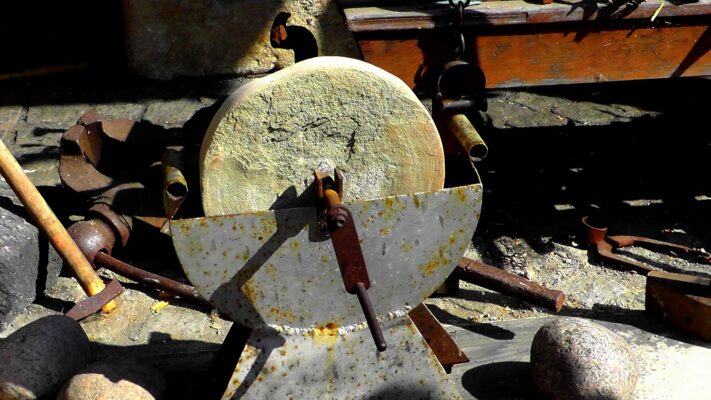
Diamond as an abrasive
Diamond stones are not whetstones
Diamond stones are not made of stone but of metal and diamond dust. The sand-like coating on the metal layer is made of industrial diamond, the so-called Bort.
These are small, often dark stones that are not suitable for jewelry purposes. This granulate is sieved and, depending on the grain size, applied galvanically as a nickel matrix to a flat metal base.
This offers several advantages. These diamond grinders can be used dry. Thanks to the metal base, they are exactly flat. They hardly wear out and can be used permanently. That also justifies the high price.
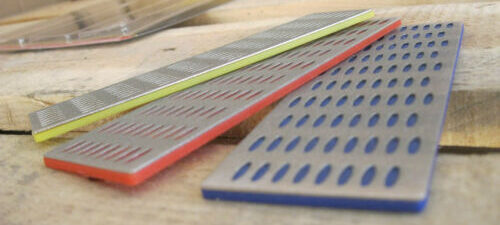
Abrasives. From stone to steel to grinding machines. What is the right thing.
There are so many abrasives and sharpening methods for kitchen knives. There is no one right choice, each has its advantages. We all want to take a closer look.
In the next article we will deal with the classic, the sharpening stone. The quickest and easiest way to refresh the lost sharpness.
Der Schleifstein ein echter Klassiker T.2
Küchenmesser schärfen mit Maschine, Stein, oder Wetzstahl T.3

